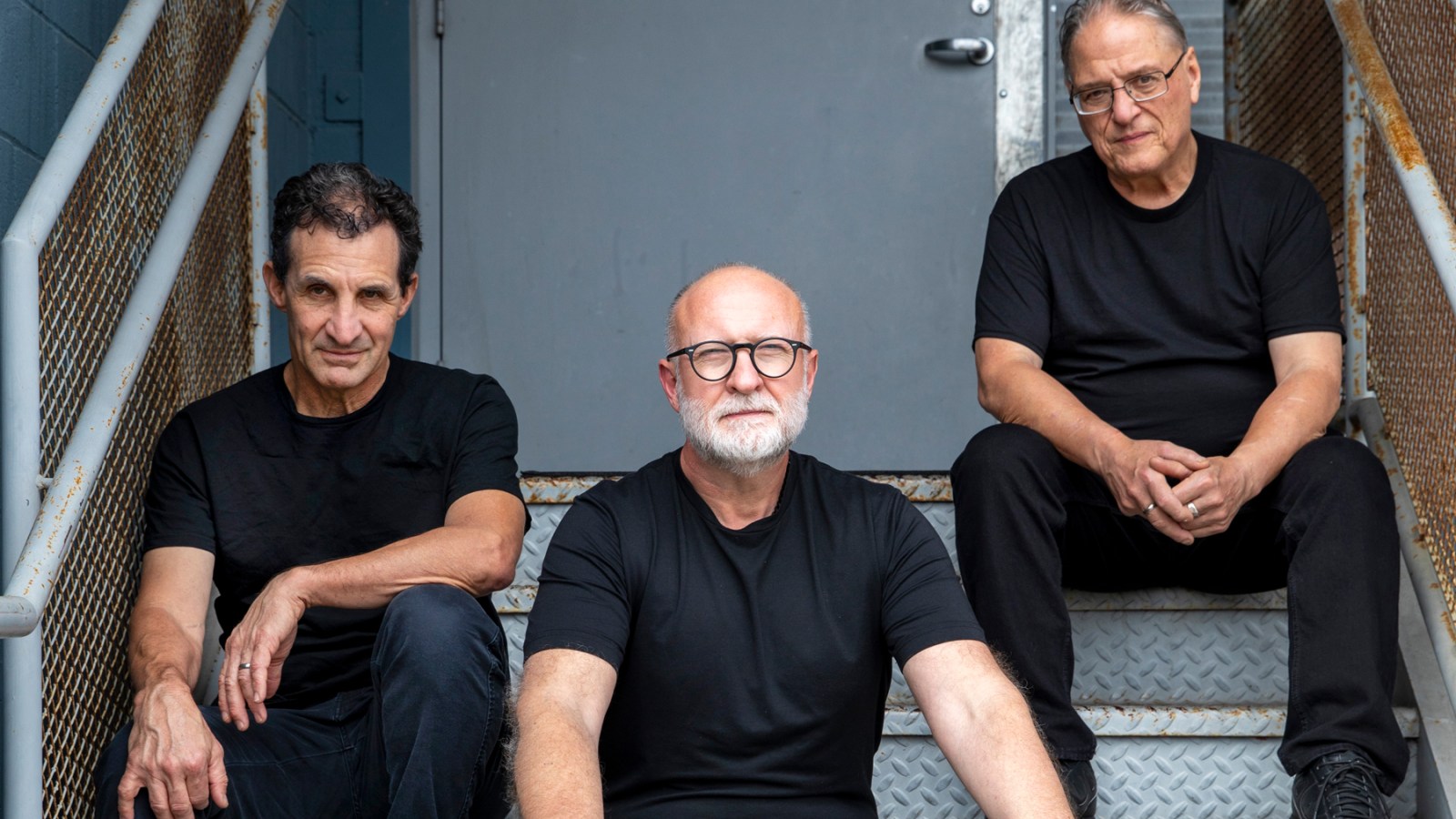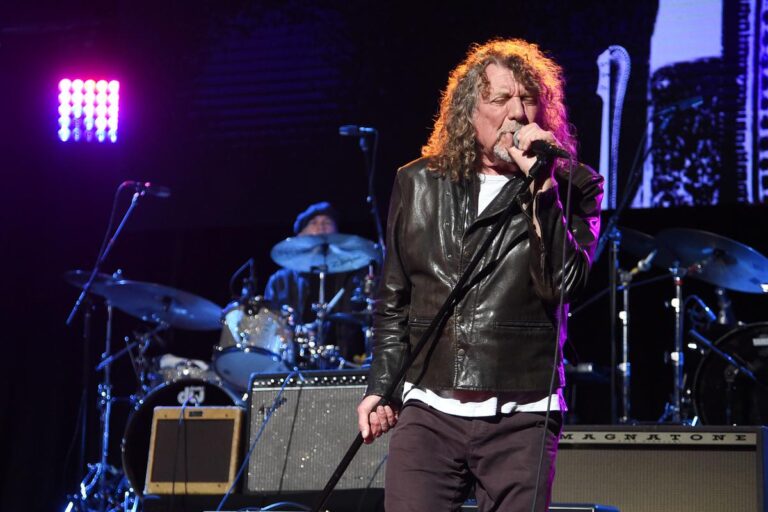Start with the laundry. Of the many times Bob Mould‘s band Sugar unexpectedly found itself at the center of pop culture in the Nineties, one in particular springs to mind for him: a 1992 festival in Belgium where Sugar were on the same bill as Metallica, Neil Young and Crazy Horse, Lenny Kravitz, and the Black Crowes. For Mould, who emerged from indie rock the previous decade with Minneapolis’ mighty Hüsker Dü, it was far from a typical gig. “Being on the periphery of the excess of those times was pretty crazy,” he says. “It was very, very different than jumping in a van and doing a punk rock tour. It was like, ‘So, Metallica bring washers and dryers out with them. I get it now.’”
Compared with his years in Hüsker Dü and the many decades after on his own, Sugar was a streaking comet in Mould’s career: two albums and one EP in two years, then over and out. But within that compressed time, Sugar brought Mould, bassist David Barbe, and drummer Malcolm Travis as close to the mainstream as Mould would ever get. In addition to that Belgium festival, the band played others with headliners like the Cure, powering through sandblasters like “If I Can’t Change Your Mind,” “JC Auto,” and “Your Favorite Thing,” which found a home on alt-rock radio.
Now, 30 years after Sugar played its last show — and more than a dozen years after an attempted but abandoned reunion — the band has returned. The group teased something was in the works on social media last week and this week unveiled a newly recorded raver, “House of Dead Memories.” There are shows announced in London and New York, too, set for May 2026.
Ironically, Sugar wasn’t even originally intended to be a band. Mould’s first post-Hüskers album, Workbook, was critically lauded — “See a Little Light” was a college radio hit and found its way onto soundtracks — but the follow-up, the bleaker and tenser Black Sheets of Rain, received a more muted response. Mould plowed on, recruiting former Mercyland bassist Barbe and Human Switchboard and Zulus drummer Travis as his new rhythm section. As they were rehearsing in Athens, Georgia, to make a Mould album, the trio was invited to play a one-off show at the 40 Watt Club there.
“We were like, ‘Sure, why not?’” Mould says. “It was already feeling like a band.” Next came a name, inspired by a packet on a coffeeshop table, and Mould unexpectedly had his first group after the glorious but often fraught ride that was Hüsker Dü. “I knew David and Malcom and their abilities and personalities, and I thought, ‘I bet this will work — I think it should work,’” he recalls. “And it did work.”
Released in 1992, just after Nirvana’s Nevermind and Pearl Jam’s Ten messed with everyone’s expectations of how rock could sound and sell, Sugar’s debut, Copper Blue, was the right record at the right moment in the culture. “I was over in Europe in the summer of ’91, playing a lot of festivals with Nirvana and Dinosaur Jr., and the table was getting set then for everything,” he says. “And to have Nirvana blow up like that, at the moment I’m coming back with a power pop thing as opposed to what Workbook and Black Sheets were: I wish I could say, ‘Oh yeah, I knew this was coming.’”
While not quite Nevermind in terms of sales, Copper Blue introduced Mould and his raging voice and guitar to a raft of Lollapalooza-minded kids — who probably didn’t know much about his previous band but loved Mould’s razor-edged songs and the MTV-friendly videos that accompanied them. “I got my ass handed to me a little bit by Black Sheets of Rain, so I went into Sugar with a little bit of ‘I’ll show everybody,’” he says. “And everything sort of blew up immediately. I didn’t wish for it, but when it happened It was like, ‘Well, here we are.’”
With Sugar’s success, Mould was thrust into a world of big-league alt-rock he’d only slightly experienced before. “It was a crazy time,” he says. “Whether I was in the office or doing press or writing and recording in the studio, I did not have a life beyond keeping that rocket in the sky for as long as I could. I wasn’t a stranger to mainstream stuff, since Hüsker Dü was on The Joan Rivers Show. But when it’s coming at you every day, that was sort of wild.”
Late in 1994, Barbe told Mould he wanted to spend more time with his family, and the timing proved right for Sugar to wind down: A few months before, Kurt Cobain had killed himself. “Kurt’s passing really hit me personally,” Mould says. “Sugar were in Atlanta, working in the studio, and to see Kurt Loder pop up on the TV and say, ‘Kurt Cobain is dead,’ it was pretty demoralizing. It made me wonder, ‘What is this?’ Kurt’s situation was unique to him but not dissimilar to what was starting to happen when young people get really successful and lose track of things. And I thought, ‘Wow, this business is sort of harsh.’”
Sugar played one week of shows in Japan early in 1995 and called it a day, with Travis moving on to other bands and Barbe shifting to academia (he currently teaches music business at the University of Georgia’s Terry College of Business). In the 30 years since, Mould has made innumerable records on his own, ventured into DJing and electronica, wrote scripts for World Championship Wrestling, and toured and recorded regularly with his current rhythm section, Jason Narducy and Jon Wurster. Sugar first resurfaced in 2011, as the 20th anniversary of Copper Blue approached. Mould, Barbe, and Travis got together and rehearsed for a possible reunion, but the musical vibe was not as inspiring as Mould had hoped. “I was a little resistant to the idea of going out on a 20-year thing,” he says. “I know a lot of people were doing it. So we got together and took a shot at it, and I think we all walked away thinking, ‘Eh, not right now.’ At least for me, it was like, ‘I think I’m going to do what I’m doing.’”
Last fall, as he was working what would be his next record, Here We Go Crazy, Mould began to sense a surge of interest in his old band, from music business folks who sensed a market and BMG, which was planning a Copper Blue reissue and a Sugar singles collection. “Fans have always shown interest,” he says. “But people in the business, whether it was BMG to different promoters around the country, were voicing things.”
Mould and Barbe had toured together, playing separate sets, but a year ago, the trio reconvened once more, at Barbe’s Athens, Georgia, studio, to play the old material. “This second time felt much, much better for all three of us, personally and as a former band,” Mould says. “So we started looking at getting back together to do a few things.”
Earlier this year, they took the next step. When the band reformed 14 years ago, Mould had just written “House of Dead Memories,” which he never recorded but unearthed for Sugar’s resurrection. “It’s a failed-relationship song, nothing too unique for me,” he says with a chuckle. “But the riff is definitely a Sugar-type riff, and it was fun to get the three of us on the floor together to record for the first time in ages.” So much so, apparently, that the take of “House of Dead Memories” we’re hearing is the first one.
In a curious bit of timing, another part of Mould’s past will be resurfacing this fall. Arriving next month is 1985: The Miracle Year, a collection of unreleased Hüsker Dü live recordings from that pivotal moment in the band’s history. Centered around a tape of an entire set recorded at Minneapolis’ First Avenue club in January of that year, and fleshed out with other recordings from 1985, the album captures the blistering roar, frenetic energy, and punchy songs that Mould, Greg Norton, and the late Grant Hart made (along with covers of Donovan’s “Sunshine Superman,” the Beatles’ “Ticket to Ride” and “Helter Skelter,” and “Love Is All Around,” the Mary Tyler Moore Show theme song). It’s a sound that, decades later, still surprised Mould when he heard the restored tapes.
“I was pretty speechless,” he says. “At that period, we were firing on so many cylinders at once that I never had a moment to stop and think. I just knew we were the best. I didn’t know how much fire we had, so to hear it close to 40 years later, I was like, ‘Jesus Christ, this is insane.’”
As Mould has talked about and written about in his memoir See a Little Light, Hüsker Dü could be an insane experience unto itself, thanks to tension between Mould and Hart, but the time frame of the collection brought back largely positive memories. “What we did in January ’85 is in such contrast to whatever collapse happened in December of ’87 and whatever animus happened in the decades after,” he says. “Grant and I were in touch, but it was a complicated, complex situation. We were very strong-minded, very stubborn, opinionated young men in a band. But 1985 was the year New Day Rising came out, and going into the summer Grant and I took full control of everything and we made ‘Makes No Sense at All’ and then Flip Your Wig. Those were good times.”
Mould particularly feels the absence of Hart (who died in 2017 of liver cancer) in the album’s packaging. “Grant was always in charge of the art department, and it’s been tough,” he says. “When a new designer comes along, I’m like, ‘Well, let me think about what Grant would have think of this.’ People step in and do what they can. But for me personally, it’s always, ‘What would Grant do with this?’ It’s a big chair to fill.”
As far as Sugar, Mould says the response to their reunion announcement and “House of Dead Memories” will determine what to do beyond the two sets of concerts already set. “I don’t want to get out too far in front of the skis, as they say,” he says. “People’s reactions will probably guide a lot of the possibilities in front of us, whether it’s more songs or more shows. All three of us are all in for whatever feels right. I just want to see if people are still interested.”



